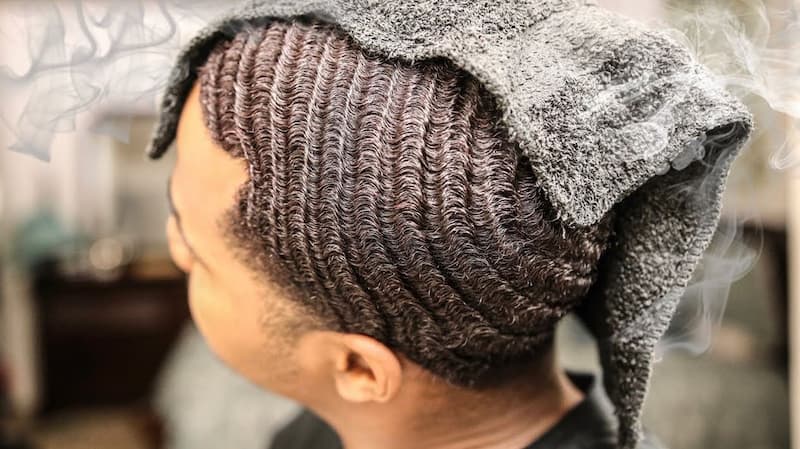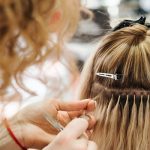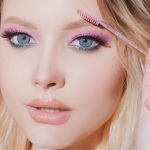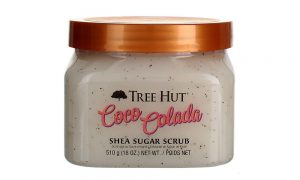
Can White People Get Waves? – the Ultimate Guide
Can white people get waves? Given the unique hair texture, many white people worry that they won’t be able to get waves. We will discuss whether white people can get waves in this article, as well as detailed instructions on how to do so.
White people can get waves! Truth be told, Caucasian hair can range from being bone straight to having tight ringlets. Most of the time, all you need to create waves is a natural wave or curl pattern and some perseverance.
But if you have thick, straight hair, it might be difficult, if not impossible, to get waves without using heat styling tools or chemical treatments.
For more information, continue reading.
Table of Contents
What Are Hair Waves?
One of the most popular hairstyles for men, particularly for men of color, is waves. Some ethnic individuals with straighter hair, however, can achieve waves.
Black men and women frequently sport short, cropped hairstyles with waves. This design features flattened wave patterns that resemble the ocean’s rippling tides. Although the origin of this hairstyle is unknown, there are many theories surrounding it.
Some claim that waves started in the 19th century with the slave women, while others date their beginnings to ancient Egypt.
There are hieroglyphic paintings showing this hairstyle on members of the pharaoh’s elite. Unaffected by the origin of the fashion, we can all agree that waves have existed for a very long time.
Important Note: This is a contentious subject. We’ll only talk about whether it’s possible; we won’t get into whether or not it’s considered acceptable culturally.
Things White People Should Consider before Getting Waves
You should be aware of a few things before choosing to ride the waves. This section’s contents may inspire you in some ways or discourage you from trying to ride waves in others.
Before getting waves, you should consider:
Your Hair Type
As previously stated, someone with naturally curly or wavy hair is the best candidate for this hairstyle. The best hairstyle for you may not be waves if you have straight hair, particularly thick straight hair.
If you’re still set on achieving the style with having the right hair texture, you will likely have to use hot tools or get a curly perm first (both of which can damage your hair).
How Long You’re Willing to Wait
Your waves will take longer to develop the straighter your hair is. Even for individuals with curly hair, it may take up to 6 or 7 weeks before you begin to see improvement.
Waves might not be the best choice for you if you’re looking for an overnight quick hairstyle.
How Much Time You’re Willing to Spend
A full-fledged lifestyle, waves are more than just a hairstyle. There is a cause for the frequent occurrence of men with waves brushing their hair.
The more straight your hair is, the longer it will take for waves to form. Your waves will still need daily care even after they start to form.
If you want waves, you’ll have to make significant changes to your hair care routine.
This entails using a wave brush on your hair several times per day, every day. You will achieve better results if you are more consistent. If all of this seems like too much work, you ought to think twice before selecting this hairstyle.
How Often Do You Want to Change Your Hairstyle?
Waves might be too much of a commitment for you if you like to switch up your hair and experiment with different styles.
Training your hair to lay in a particular wave pattern takes time and practice. You’ll have to start over if you frequently alter your style, which will reverse your progress.
Cultural Appropriation
It’s common for black guys to wear waves, although a white person might be accused of cultural appropriation for wearing a wavy hairstyle.
You must decide if you are prepared to put up with potential criticism of your chosen hairstyle, including dirty looks.
How Are Waves Established?
The interesting thing about waves is that they appear differently depending on who is looking at them. Regardless of the texture of your hair, you must be dedicated to daily hair care if you want waves.
There are four main steps to establishing waves in your hair:
- Washing your hair
- Moisturizing your hair
- Brushing your hair while it’s wet
- Covering your hair with a durag
Washing Your Hair
You need to wash and condition your hair before trying to train it to flatten out in waves in order to remove product buildup and debris.
For those who want to add waves to their hair, there are many shampoos available. But to be completely honest, specialized shampoo and conditioner are not necessary. A regular cleansing shampoo works well.
Moisturizing Your Hair
Your hair loses its oils after shampooing, so you must moisturize it to get the waves you want. You need to balance out the dry and the moist. Your hair will not form waves effectively if it is dry.
Water- or oil-based moisturizers work best. These will moisturize the hair without leaving much residue behind. Avoid using products with a petroleum base. It’s best to avoid using this product because it clogs pores.
Brushing Your Hair While It’s Wet
Brushing is the step that is most important when beginning a wave pattern. Never brush dry hair. You should not do this because it will harm your hair and result in split ends. The best time to brush is right after a thorough wash, but as you maintain your appearance every day, remember to wet your hair first.
The 360-degree waves are another name for waves. This is due to the way the waves were created using brushing. Starting at the top of your head, you repeatedly brush forward.
From the crown to the front of the sides of your head, brush each side. Go over your chin with a brush. Last but not least, brush from the crown to the back, then do the opposite side.
You must put a lot of effort into teaching your hair to form wave patterns. A good brush is necessary, as well as patience. The best brush to use is a boar-hair soft or medium bristle brush.

Covering Your Hair With a Durag
Once you’ve finished the aforementioned procedures, it’s time to lock in and preserve your waves. It is not possible to sleep with your hair exposed. Your carefully crafted wave pattern will be destroyed. In particular, if you have hair with a soft texture, it will be frizzy.
If you have a weak to nonexistent curl pattern, getting waves is still possible, but it will require extra diligence at each stage. A durag is a cloth with a texture similar to satin or silk that covers and shields the hair.
It traps moisture, holds your waves in place, stops them from breaking, and shields them from trash and other environmental debris. There are additional durag varieties, including cotton and velvet.
Although they may be attractive, these are not good for your hair and may do more harm than good. Your hair becomes dry and brittle as a result of them.
How to Maintain Your Waves?
The next step is to learn how to maintain the waves you have created. To keep your waves defined, read the following information.
Brushing Your Hair Often
Even after the waves have developed, you must keep brushing your hair every day. If you want your hair to fall in a particular pattern, make sure you brush it in the same direction each time.
Always move in the direction of your waves, whether you’re simply running your hands over your head or combing the curl-enhancing cream through your hair. Your diligent work is undone whenever you comb or brush in the opposite direction.
Getting Your Hair Cut Regularly
Haircuts are necessary to keep your waves in place. Your hair should never be so short that it can be seen through to your scalp. 1 to 1½ inch hair is recommended, although you might need a more substantial cut, depending on your curl pattern.
Make sure the barber knows you’re trying to keep your waves when you get your haircut. Instead of cutting against your hair’s grain, they will do so. In order to create the appearance of deeper waves, they might also be able to add layers to your hair.
Covering Your Hair at Night
Your hair rubbed against the pillow as you turned over in your sleep. Your developing curl pattern is messed up by the friction, which prevents advancement.
Additionally, cotton pillowcases can suck the moisture from your locks and cause breakage. You can use a durag, wave cap, or silk scarf to keep your waves in place at night.
Read about
Do’s and Don’ts of Getting Waves
Now that you are familiar with the fundamentals, we would like to give you a list of dos and don’ts. You’ll be able to get the waves you want if you keep these in mind.
Do’s
- Doairdry or use a diffuser to bring out your natural hair texture.
- Do use high-quality styling products to help you maintain your hairstyles.
- Do cover your hair at night to preserve your waves.
- Do wash your durag and brush often to avoid product buildup.
Don’ts
- Don’tbrush your hair when it’s dry.
- Don’toverload your hair with product.
- Don’t use brushes with stiff plastic bristles.
- Don’trun your fingers through your hair.
- Don’t overwash your hair.
Frequently Asked Questions
Can I Get Waves If I’m Not Black?
Yes, even people with straight hair who have hair that easily curls can get waves. Unusual black hair can easily curl, but some blacks have straight hair that can’t. With the proper technique, styling products, and wave cream, anyone can achieve waves.
I Have Straight Hair. How Long before I Can Get Waves?
Your hair’s texture significantly affects how long it takes you to get waves. You must exercise extreme patience because getting a wave can take anywhere from three days to three weeks. However, after a week, you may start to notice some results.
Does Race Have Anything to Do With Getting Waves?
No, it doesn’t because the majority of black people inherit a dominant gene that makes their hair naturally curly or wavy, which complements waves perfectly. Straight hair can be difficult to curl for some black people. With the proper styling tools, perseverance, and waving cream, anyone can achieve waves.
Conclusion on Can White People Get Waves
People outside of the African American community also desire waves because they are so common. Despite the fact that many white people say they would like to wear waves, they are skeptical that their hair can support this look. This isn’t quite accurate, though.
Since waves have been popular among black men for the past few years, many people have questioned whether white people can also get waves. The majority of people, including those with straight hair, can actually achieve waves. With the right texture, timing, technique, and waving cream, even whites can achieve waves.






